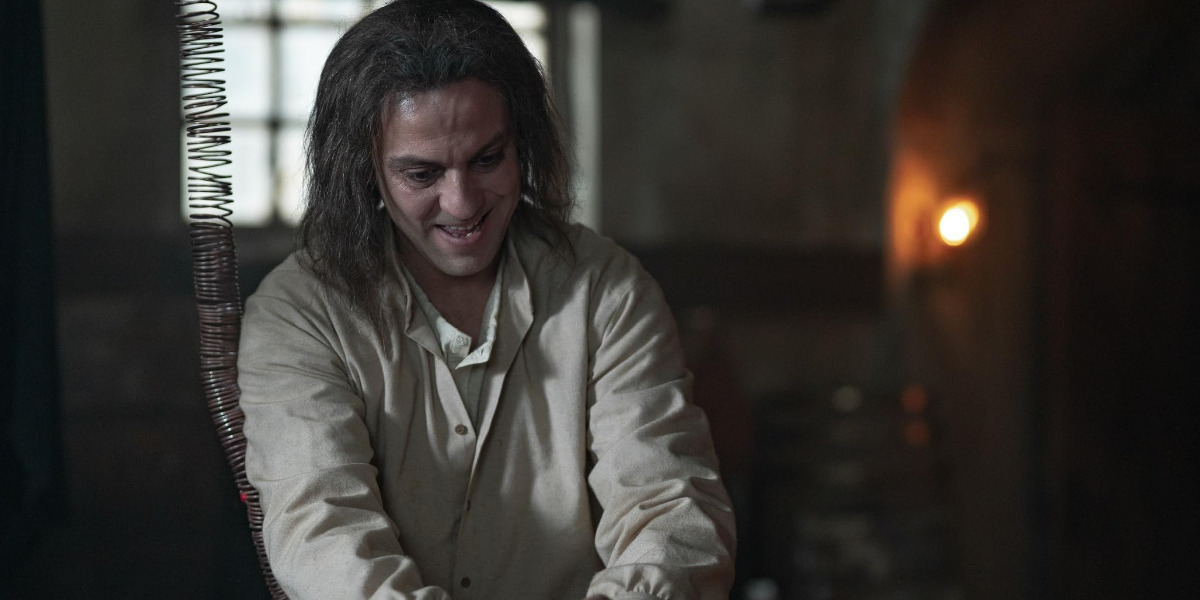Netflix’s Turkish drama show ‘Creature’ delves into the horrifying philosophical and moral exploration of an ambitious medical student in his quest to defeat death itself. Ziya, a young man from Bursa, seeks to find the cure to the epidemic of perpetual death that always seems to elude even the most advanced medicine. As such, when he meets İhsan, a doctor from Istanbul, who gaps the thin line between genius and madness, it marks the beginning of a forbidden scientific experiment that threatens to take a toll on both scientists’ souls.
This drama takes place within the period setting of the Ottoman Empire and brings to life an age-old tale of a hero’s plight against their own hubris. With era-appropriate costumes, locations, and themes, ‘Creature’ submerges the audience into its world and infuses its narrative with an authenticity juxtaposing the show’s sci-fi genre. As such, if the show’s overall environment has caught your attention, you must want to learn more about its origins. Let’s find out!
A Turkish Adaptation of Mary Shelley’s Frankenstein
Although ‘Creature’ (Originally titled ‘Yaratilan’) is not based on a true story, the show has a rich origin story. Created by Çağan Irmak, this show is an adaptation of ‘Frankenstein’ by Mary Shelley, set within the Ottoman Empire period of Tukey’s history. Thus, Irmak utilizes a classic piece of literature to bring a familiar story to his audience through the fresh lens of Turkish culture.

‘Frankenstein’ or ‘The Modern Prometheus,’ as it’s also referred to, often credited as the first-ever work of science-fiction, firmly remains cemented in its fictionality. Shelley’s 1818 novel follows the story of Victor Frankenstein as he creates a being from dead body parts, only to end up haunted by his own creation. The morally fraught idea came to author Shelley in 1816, in Geneva, when bad weather had trapped her indoors with her companions, husband Percy Shelley, infamous poet Lord Byron, and his physician John Polidori.
At Byron’s suggestion, the group decided to write horror stories of their own to pass the time. While initially, Shelley faced some difficulty in coming up with a suitably grotesque and bone-chilling fable, when inspiration finally struck her, it bore great success. In her additional author’s introduction from 1831, Shelley wrote, “I saw – with eyes shut but acute mental vision – I saw the pale student of unhallowed arts kneeling beside the thing he had put together.”
Thus, the story of Frankenstein and his creature was born. The author’s encounter with several tragedies in her life likely shaped this story into the timeless classic that it stands as today. Shelley’s mother died shortly after the author’s birth due to an infection contracted during childbirth. The tragic separation of mother and child soon echoed back in Shelley’s own life as the author birthed five children and lost four before they could grow into adulthood. Therefore, the author’s horrifying experiences with devastation within creation likely paved the way for her work’s gripping narrative.
Over the years, Shelley’s work has seen numerous adaptations, granting her terrifying creature a spot among the most iconic monsters. Nevertheless, as time has passed, the author’s creature has undergone a certain bastardization, swerving him far from his original intellectual but morally disturbing self to a bumbling monstrosity in pop culture.
In contrast, Irmak strives to bring the original reality of Frankenstein’s creature to the screen, focusing on the horror behind “the effect of any human endeavor to mock the stupendous mechanism of the Creator of the world,” as Shelley put it herself. As such, the show ends up retaining the philosophical themes and ideas of Shelley’s work, which deeply resonates with the human condition.
Furthermore, by adapting the tale to a bygone era of Turkey, the director/writer depicts the region’s history and culture, infusing them seamlessly into the source material. Nevertheless, outside of historical accuracy for the sake of aesthetics, narrative, and storytelling, the show has little connection to real life. Ultimately, ‘Creature,’ tied to its fictional roots, can only be credited to Irmak, his creative team, and the esteemed American author Mary Shelley.
Read More: Best Frankenstein Movies of All Time


You must be logged in to post a comment.